The Latest from TechCrunch |  |
| Mo’Minis Finds Mo Money For Mo Games Posted: 13 May 2009 08:48 AM PDT
Mo’Minis, an Israeli-based startup that provides developers a platform to create mobile games and entertainment applications, has secured $1.5 million in Series A funding from BRM Capital. The company says that the funding will be used to improve the current development platform, strengthen its community of developers and close strategic partnerships with distributors operating mobile carriers worldwide. Launched in 2008, Mo'Minis raised $400,000 in seed money from private investors. Mo’Minis’ platform allows advanced as well as non-skilled developers to create rich media casual games from scratch, without the need of programming, and have them seamlessly supported on a wide range of mobile handsets. Furthermore, developers can collaborate, share game assets with Mo’Minis developers’ community members and can monetize their games through Mo’Minis various distribution channels. Crunch Network: MobileCrunch Mobile Gadgets and Applications, Delivered Daily. |
| Skydeck Mashed Up With Google Voice Could Be The Perfect Combination Posted: 13 May 2009 07:45 AM PDT
One of the few necessary evils that accompanies the uber-cool and recently launched Google Voice service (which was officially released in March) is the necessity to convert all of your numbers (cell, landline, office) to one number. It can be an annoying and daunting task to change your cell phone number, especially if you are reliant on your cell for business and personal communications. Mobile startup Skydeck’s new mashup with Google Voice may help you avoid the hassle of changing at least your cell phone number while still letting you use Google Voice. While Google Voice is all your numbers online, Skydeck’s service, which came out of beta earlier this year, is just your cell phone online. Via an app on your cell phone, all your calls, text messages, voicemails and contacts are backed up on Skydeck.com and you can search, read, and reply to your messages (by voice or by text) from Skydeck as if it were your cell phone. If you don't answer a call, Skydeck takes a voicemail, converts the speech to text, and sends you an email. If you are at your desk, you can call or text people from Skydeck. The call appears to come from your cell phone, so your friends will know who it is. Similar to Google Voice, you read a transcribed version of each voicemail (via SpinVox). It works best on Blackberry and Android phones (although most of the features work on nearly any phone), and costs $9.95 a month. By offering a free service to Google Voice users, Skydeck hopes to acquire new customers who may be receptive to its service. The catch with Skydeck is that it can’t help you with your other phones, i.e. office and home lines, and the full version of Skydeck isn't free (like Google Voice). Google Voice, which was formerly GrandCentral (a service Google acquired for $50+ million in 2007) ties all your phones together with one new number that rings them all. It definitely simplifies your phone correspondence and management. That is, once you switch over all of your numbers to a new number. You give out the one phone number, administer it with a website or voice menu, and forward calls to various devices depending on who's calling and when. Google Voice lets you accept and send text messages, transcribes voicemails, and lets you specify settings for certain callers (whether they go directly to voicemail). In addition, Google Voice’s interface is a comprehensive Gmail-like inbox (and is also added to the list of links in your Google Apps) with tabs for voicemail, SMS, Recorded calls, Placed calls, Received calls and Missed calls. And all SMS and transcribed voicemails are searchable and taggable. Both Skydeck and Google Voice are extremely useful services, especially considering the slow death of voicemail. But if you use your cell phone most of the time and don’t want to go through the hassle of changing your phone number and operating it through Google Voice, Skydeck now offers you the option of using a free or paid version Skydeck to manage your cellphone and Google Voice to manage your other phone lines. Skydeck will configure your phone so that the calls you miss on your cell will go to Google Voice. Messages will still be copied to Skydeck so that your cell phone calls, texts and voicemails are in the same place. While I wish I could not have to change my cell phone number and still have all the numbers in my life be controlled by one service (like Google Voice), I have realized that I can’t have my cake and eat it too. One of the sole drawbacks to Google Voice is the requirement to change your phone number and for those of you who, like me, completely rely on your cell phone and don’t own a land line, that’s a big sacrifice. In a way, Skydeck’s offering gives you the best of both worlds. And you can access most of the key features of Skydeck, mashed up with Google Voice, for free. Here’s a video which demos the new mashup: Crunch Network: CrunchBoard because it’s time for you to find a new Job2.0 |
| Blerp Aims To Turn The Web Into One Big Forum Posted: 13 May 2009 04:56 AM PDT
The web application it’s introducing today is dubbed Blerp, and its ambition is to turn the Web into a giant interactive message board by making it possible for visitors to add text comments and multimedia to existing web pages and share them with their friends. Under the motto ‘layer the web!’, Blerp aims to enable people to enrich web pages with an additional layer of content with the ability to let others join in on the fun at any time. RocketOn is calling the concept Hyperlayers, and if the idea makes you think of social annotation services like Reframe It, Diigo or Fleck, that’s because it’s taking an extremely similar route with Blerb. The app basically creates a virtual space on top of websites that you visit in the form of a sidebar and a header, which allows you to post text, photos, videos and interactive elements like polls and ratings on top of the page while still being able to see and interact with it. Blerb users get a personal homepage dubbed My Stuff that gives them an overview of what’s being discussed by their friends online, and are able to jump right into the conversation from the interface. In Digg, or rather StumbleUpon fashion, users can ‘hype’ certain discussions to help it get featured on the Blerp homepage, with the extra ability to favorite (aka bookmark) live discussions and share them with friends by e-mail or through a variety of social networking services. There are two types of discussions: user-owned and community discussions. The former are created and controlled by specific users, while community discussions are created by the startup’s system and are not owned by anyone. There’s a community discussion on every site Blerp users visit, and you can view one I started for TechCrunch here. I don’t see myself becoming a regular Blerp user any time soon, but the original idea seems to be well implemented. Note that the service is still in alpha mode, so expect to run into a few bugs here and there. RocketOn is backed by $5.8 million in venture capital (judging from the members on its board by Bertram Capital next to DE Shaw’s Venture Group whose investment in the company we covered earlier) and says it initially developed Blerp as a feature for its parallel virtual world but quickly realized that it could function as a stand-alone tool just as well. Time will tell if it was a sensible decision to make.
Crunch Network: CrunchBoard because it’s time for you to find a new Job2.0 |
| Intel Fined Over €1 Billion For Violation Of European Antitrust Laws (Updated With Intel Statement) Posted: 13 May 2009 03:26 AM PDT
That’s one hell of a fine, considering the previous record for similar abuses in the EU was ‘only’ €497 million (Microsoft, back in 2004). The European Commission has ordered Intel to stop the exclusion practices immediately, and said it would closely and actively monitor Intel’s compliance with its decision. E.U. regulators first began investigating Intel in 2001, after AMD filed a complaint in Brussels the year before. The commission estimates the world market in the specific chip set in question (x86 CPUs) to be worth about €22 billion a year, with Europe accounting for approximately 30% of that (€6.6 billion). Intel currently maintains a share of about 80 percent of the European market. Intel has not commented yet, but the general expectation is that the company will appeal both the fine and orders to change its business practices to the European Court of First Instance. Update: Paul Otellini, Intel Corporation president and CEO just issued the following statement:
(Image via BusinessWeek) Crunch Network: CrunchGear drool over the sexiest new gadgets and hardware. |
| Ning Gets A Star Studded Boost From The Collective Posted: 13 May 2009 02:37 AM PDT
Another contender in the celebrity hunt is social network platform Ning, which is already home to a number of social networks dedicated to celebrities, politicians, and musicians. Today, the company has announced that it has forged a partnership with The Collective, a management company whose clients include Enrique Iglesias, to create custom networks for a number of The Collective’s biggest clients. Along with Enrique, Collective clients including comedian Eddie Izzard, and actors John Leguizamo and Taylor Momsen will be deploying their own social networks on the platform. And some clients, including The All American Rejects, Staind, and the Plain White T’s have already launched their own Ning networks as their homepages.
I spoke with The Collective partner Aaron Ray, who says that while the company’s artists will continue to maintain presences on other networks where appropriate, Ning has offered a greater degree of access to support personnel than other social networks have - clearly the site is going out of its way to foster its relationship with celebrities. But Ning SVP of business operations Jason Rosenthal says that the company is only interested in working with celebrities that will use their Ning networks to truly connect with fans, not just as vanilla corporate celeb properties. Rosenthal also says that while many celebrities maintain presences across multiple sites, they tend to use Ning as their central hub, with their other profiles serving as satellite ’spokes’ linking back to their social networks. This isn’t surprising given the increased level of control a celebrity has over their Ning network, than say, a Facebook page. But celebrities won’t be dropping the other services any time soon - a Ning network may offer a richer experience, but casual fans are more likely to subscribe to a celebrity’s Twitter feed or Facebook page than they are to join an entirely new social network. Crunch Network: CrunchBase the free database of technology companies, people, and investors |
| Blah Girls Jumps From The Web To TV, As Kutcher Does The Opposite Posted: 13 May 2009 01:14 AM PDT
Katalyst Media, the production company Kutcher runs with Jason Goldman, has signed a deal with CBS Television Distribution (CTD) to distribute Blah Girls on television. Specifically, the show will run as one-minute interstitials between segments on the entertainment magazine show, The Insider. While the show has run on the web since its launch during TechCrunch50 last June, a television distribution deal has always been a part of the broader goal for the content. And CBS has a larger development deal with Katalyst Media, so this is simply an extension of that. Still, it’s a bit odd that Kutcher is taking the show to television after going on and on about how his race to a million followers showed that individuals could trump huge media conglomerates. And he beat CNN, but he still apparently needs CBS. Why? Because there’s money there of course, and it’s still tough to monetize an online video venture. But Blah Girls will continue on the web as well, and I’m sure the CBS gig will get it some good exposure. Find a Mother’s Day episode of Blah Girls below. Crunch Network: CrunchGear drool over the sexiest new gadgets and hardware. |
| iLike Launches Custom iPhone Apps, Syndication Platform To Help Artists Connect With Fans Posted: 13 May 2009 12:00 AM PDT iLike, the popular music discovery site with a huge presence on social networks, is launching a set of new syndication services for musicians. Beginning tonight, iLike now offers extensive integration with Twitter, Facebook, MySpace, and YouTube, allowing artists to distribute content to each of their online presences from a single control panel. In addition to these, the company is also launching a new self-serve platform for building customized iPhone applications for artists, allowing them to establish themselves on the App Store with a minimum amount of effort and resources. While most readers probably associate iLike with music playlists and streaming, the service is also home to 300,000 artists who use its services to help manage and distrbute their content. Before today’s annoucement, the service offered more limited syndication options, allowing them send data through the iLike Facebook application, its iGoogle widget, and an iTunes plugin. But the new options go much further. One of the most significant changes is the release of a new ‘Music’ tab for an artist’s Facebook pages, which will allow them to incorporate their music, videos, and concert information (previously artists would have to rely on the iLike Facebook application). The service has also expanded its support for Twitter, allowing artists to import their Tweets from elsewhere and distribute them to their social network profiles, or to syndicate them directly from the iLike dashboard.
Other additions abound: artists can now sync their videos between YouTube and iLike, so they won’t have to post them in multiple places. They can create their own ‘dot-com’ websites, which they can manage from the iLike dashboard. They can syndicate their content directly to their Ticketmaster profile pages. And iLike’s concert app and event pages on MySpace have also gotten a boost, allowing fans to purchase tickets directly without having to go elsewhere and including more social features (like being able to see who else is going to a certain concert). Finally, in what is easily the biggest departure for the company, iLike is also rolling out a platform that will allow artists to create their own iPhone applications, which can include dynamically updated photos, music, blog posts, and other content (you can see a demo of the app below). iLike is charging artists a one-time fee of $99, and will also participate in a rev-share deal for those that want to charge for their applications (the current plan is for a 50/50 split). Artists that give their application away for free will only have to pay the initial fee. The iPhone is quickly becoming a very popular and powerful way to connect with fans, and there’s no doubt even smaller bands are eager to appear in the App Store. But iLike won’t be alone in trying to tackle this market - other companies like Mobile Roadie and Kyte are offering similar platforms for building custom iPhone apps. Crunch Network: CrunchBase the free database of technology companies, people, and investors |
| MySpace Wants To Avoid This Whole Holocaust Denial Thing Posted: 12 May 2009 09:58 PM PDT
Meanwhile, MySpace is just hoping no one looks their way. In an email to MySpace forum moderators today, MySpace asked moderators to “keep an eye out for anti-semitism and derogatory comments.” Based on the text of the email, some of which has been redacted, it looks like moderators are expected to remove this content promptly and even perhaps ban offending users. MySpace’s motivation to deal with the problem may be fairly sad (just to avoid bad press), but at least they’re doing the right thing by getting this hate speech off the site. MySpace’s terms of use are similar to Facebook’s - specifically hate speech is banned. Here’s the email:
We’ve reached out to MySpace for comment on their official policy on Holocaust denial. Crunch Network: CrunchBoard because it’s time for you to find a new Job2.0 |
| Twitter Decides We’re Not Smart Enough For @Replies, Changes Them Again Posted: 12 May 2009 09:13 PM PDT
Twitter is officially getting dumbed down. For the second time in less than two months, Twitter has changed its @reply system, this time by removing an option that has existed for many months in an effort to appease confused newcomers. The basic premise behind the @reply system is that it allows you to create a semi-public conversation with another Twitter user. To prevent you from having to listen in to conversations you might not care about, the default setting has long been to only show these @replies if you were following both people in the conversation. And that’s the choice most people stuck with. But there was an option to receive all @reply messages from any users you were following. This led to an increase in noise, but it also exposed you to new Twitter users and conversations that you might have otherwise missed out on. I’ve had it turned on for over a year. But apparently that option has confused too many people, so Twitter is killing it. From the Twitter blog:
Gee, thanks Twitter. I didn’t realize that an option I manually activated was undesirable. Any other things I shouldn’t like that you’d like to make me aware of? If there was anything undesirable about the old system, it was that Twitter did a poor job of explaining it, not that the functionality itself was unwanted. And given that the option was not the default and was buried under a settings menu, why would it matter anyway? If too many people are getting confused, why not simply make it more hidden (perhaps under an ‘advanced’ tab)? In the months since Twitter has grown in mainstream appeal, and especially since it made its debut on Oprah, some of Twitter’s early adopters have expressed fear over a change in the service. With a growing number of celebrities and media presences (not to mention spammers), they worry that the service will lose its tight-knit feel. Before tonight I never paid much attention to this train of thought - after all, on Twitter, I can just follow the people I care about and ignore those I don’t. But it’s clear that Twitter is concerned with appealing to a more mainstream audience, and if that takes making a very simple service even more simple, then by golly, that’s what they’re going to do. Update 1: Many Twitter users are up in arms about the change, voicing their complaints under the channel #fixreplies, which is currently the top trending term on Twitter. Update 2: Twitter CEO Evan Williams just tweeted about the change: “Reading people’s thoughts on the replies issue. We’re considering alternatives. Thanks for your feedback.” Crunch Network: CrunchBase the free database of technology companies, people, and investors |
| Google Takes Steps Towards A More Structured Web Posted: 12 May 2009 07:29 PM PDT
Earlier today Google announced that it was going to begin limited support of RDFa, a framework that allows web developers to incorporate structured metadata into their sites. To most people, this probably doesn’t sound particularly exciting, but it’s an important step that may indicate that the search giant is going to embrace structured data on the web - something that it has long shied away from. I’m not going to get into the specifics of the RDFa standard (if you’d like a more thorough explaination you can find one here and here). But the benefits of using such semantic tagging can be seen in a few basic examples. If I was to write a post that mentioned “The President” without naming him, Google probably wouldn’t realize that I was talking about President Obama - it might think I was referring to another US president, or perhaps the leader of a company. But using RDFa I could tag the words “The President” with “Barack Obama”. That tag would be visible to machines spidering the page for indexing (resulting in smarter search results), but wouldn’t be shown to users reading the post. In effect, it’s a way to tell search engines about your content without exposing your visitors to extraneous text. RDFa tags will also allow search engines to identify structural data on a web page and present it in search results (Google is using it to generate its rich snippets). And browsers could potentially read the data and use it to present maps or other elements outside of the web page.  Mark Birbeck, who first proposed the standard and will be speaking at a conference on the semantic web this June, says that this is a big step for Google. He explains that Google has always tried to use its algorithms to derive context from the content on webpages. This usually works pretty well, but as we’ve noted before, there are some things that algorithms just can’t identify properly (at least, not yet). Now, it may be some time before we start seeing any real benefits from Google’s implementation of RDFa. For starters the search engine is only using it in a limited fashion, and it isn’t clear how long it will take for Google to begin incorporating it in other ways. But the standard is already spreading without Google’s help - Yahoo supports RDFa, and many sites including the UK government are implementing it too. Of course, with its dominant market share Google’s stamp of approval is huge for RDFa’s acceptance, and we’ll probably begin to see more services follow suit (Drupal 7, for one, will include it by default). That said, not everyone is happy with the way Google is using the standard. There are complaints that Google is using a hobbled implementation of RDFa, ignoring some of the established conventions that many webpages have already used to tag their data. Birbeck acknowledges that Google could have implemented RDFa better, but says that “the only reason they can even raise the question of whether Google used the right vocabulary is because they are using RDFa now.. And that is huge.” 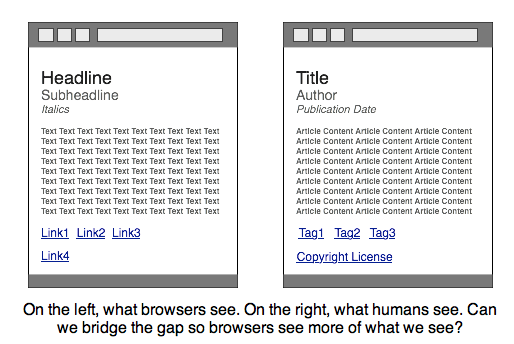 Crunch Network: CrunchBoard because it’s time for you to find a new Job2.0 |
| Posted: 12 May 2009 07:28 PM PDT
One bit of news I was interested in was the space shuttle, because it received some damage today while venturing into space. I decided to do a pretty generic search for “Space Shuttle,” since that is likely what most people would enter of all the possible combinations of words. Here are the results: 1. Google: The top result was from a Google News story about the shuttle damage. That’s good, that’s what I was looking for. The rest was historical information I didn’t want or need. Sure, I could have used a Google News search, which would have no doubt returned more relevant results (but maybe not that relevant), but most people still use just regular old Google.com, so that’s what I did. 2. Twitter Search: The first result is pretty telling: “Just watched the space shuttle go overhead — so cool” That’s nice, but gives me absolutely nothing in terms of what I’m looking for. The second and fourth results were good and gave me links for more info — now you see why Twitter wants to (and should) get into the business of crawling links for its search results. 3. FriendFeed: The top two results are good, but the rest are just general information about the launch. This is an interesting set of results because unlike Twitter Search results, FriendFeed filters everything through my friends by default. That’s good for certain searches, but maybe not so good for big, meaningful searches when you’re frantically looking for information. 4. Scoopler: With its mixture of live tweets coming in and popular content, Scoopler gives me some pretty solid results for what I’m looking for. And it’s presented in a way that’s pretty easy to follow. I like this one, a lot. 5. OneRiot: The top two results in the “Realtime” view are good, but the others aren’t what I’m looking for. The Pulse view isn’t much better. The relevant results come from Twitter or OneRiot itself. There’s nothing from Digg in terms of what I’m looking for. (OneRiot scans Twitter and Digg.) 6. Tweetmeme: Tweetmeme’s search defaults to the “Best Match” area which gives you a solid result for the number one and three items. When sorted by “Age,” the results are all over the place. Second test: For a second test (not pictured), I did a query for “Miss California” — another hot topic on the web right now. Being as this one is a little less time-sensitive, the results were better across the board. OneRiot showed quite a few Digg results this time around, and even Google had some relevevant links beyond its Google News top area hits. Scoopler had some good popular results, but its Live area was dominated by tweets mostly making jokes to friends about the beauty queen. Tweetmeme’s “Highest Tweets” area really shined here. Conclusion: It’s hard to declare one single winner because results vary based on how fresh the topic being queried is. Scoopler seems to work very nicely for breaking news as it mixes in an auto-refreshing Twitter search stream (as I keep going back to, it’s dominated by tweets) with popular items. Tweetmeme seems to work very well for slightly older items that have been retweeted a lot. OneRiot is nice in that it crawls the individual pages to get better content, but for breaking news, I’m not sure that it actually works better than a quick topical scan of a bunch of items. And FriendFeed’s search is great if you want to see what your friends are saying about something, but trickier if you go outside your social circle. It seems pretty clear why Google is interested in adding a real-time layer to its search capabilites, while Twitter wants to crawl pages with its engine — the combo is pretty killer. Crunch Network: CrunchGear drool over the sexiest new gadgets and hardware. |
| Kanye West Is Mad As Hell At Twitter — And He’s Not Going To Take This Anymore! Posted: 12 May 2009 05:59 PM PDT
He specifically calls out the “heads of Twitter” a few times. Let’s see if @ev @biz and @jack are listening. (Update: yup) - Hopefully, he doesn’t have the caps keylock on for nothing. Here’s what he had to say:
[thanks Auston] Crunch Network: MobileCrunch Mobile Gadgets and Applications, Delivered Daily. |
| Ebay’s Nazi Ordeal A Decade Ago Mirrors Facebook’s Plight On Holocaust Denial Today Posted: 12 May 2009 05:50 PM PDT
In 1999 eBay was under heavy fire for allowing the sale of Nazi memorabilia. Their policy approach at the time mirrors almost exactly what Facebook is doing now with Holocaust denial groups, namely banning behavior in certain countries to comply with local laws, but allowing it everywhere else. From a 1999 New York Times article: “eBay…said that the company already prohibited the sale of such items in Germany because they are outlawed there. But he said it generally polices the sales of banned items only after receiving complaints from users” From a PCMag article in May 2009 on Facebook: “We have recently begun to block content by IP in countries where that content is illegal, including Nazi-related and Holocaust denial content in certain European countries,” the Facebook spokesman said. “The groups in question have been blocked in the appropriate countries.” By 2001, though, eBay had changed its policies to ban all sales of Nazi memorabilia across its sites. The ban includes sales of Holocaust denial items. The current policy is here. Part of the balancing act eBay uses when making a decision on a listing is to ban items which “lack substantial social, artistic, or political value.” It goes on to state “this includes items that may be deemed inappropriate or insensitive to victims of natural disasters or human tragedies.” Facebook doesn’t want to be the last reasonable entity standing on the wrong side of the Holocaust denial issue. But it’s sure looking like that’s how this is going to play out. Crunch Network: CrunchBoard because it’s time for you to find a new Job2.0 |
| F**ked Company And Adbrite Founder Launches Twitter Dating Site Flirt140 Posted: 12 May 2009 05:40 PM PDT 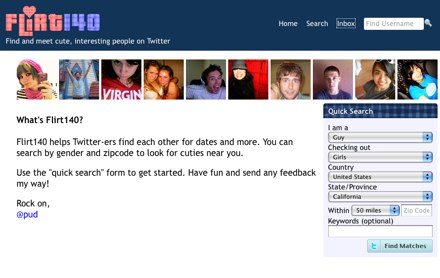 Philip “Pud” Kaplan, founder of FuckedCompany and Adbrite, is adding another Twitter application to his name. He recently created both Tweetname, a domain name registering site and Fast140, a Twitter speed typing game. Now Pud is launching Flirt140, a flirting and dating site for Twitter. A free service, Flirt140 allows you to search for Twitter users by gender, geographic area and keyword. The site uses oAuth to connect to your Twitter account. Kaplan says a proprietary algorithm is used to determine gender of Twitter users and claims that it’s pretty accurate. Flirt140 also allows members to send direct messages to anyone on Twitter, whether they are following each other or not. Kaplan says that because of Twitter’s popularity, Flirt140 could rival the reach of the world’s largest dating site, Match.com. According to its site, Match currently has 15 million single users in 37 countries. Kaplan also started Kaplan Index, a stealth startup that will focus on the employment space. Crunch Network: MobileCrunch Mobile Gadgets and Applications, Delivered Daily. |
| Calling All Dudes: Break.com Wants Your Fratastic Videos Posted: 12 May 2009 04:48 PM PDT
Just when it appeared that Web 2.0 may be abandoning the UGC ship for premium content, Break.com, a social video site for guys, is upping its budget to add more user generated content to the site. Through Break’s “stimulus package,” the site is increasing its investment in content purchased from its users and other amateur filmmakers by 50%. Break.com, which had 3.8 million unique visitors worldwide in March according to Comscore, buys original user generated content from its audience. Break says that it spends between $200 and $1000 per video. Additionally, Break.com licenses professional content from a number of sources, including the NBA, for a higher amount. Break.com also produces content internally. In total, Break has acquired over 2,000 clips. This year, Break says it has purchased more than 140 user-submitted videos that have been seen published on the site. Break.com is surviving in a space where many of its competitors are dropping out. 60Frames, another video entertainment site, recently shut its doors, because of lack of funding. And Metacafe just eliminated its Producer Rewards program, which paid producers for content. Break.com hasn’t been immune to layoffs but it seems to be surviving, and maybe even growing despite the shakeup at other online video entertainment sites. In early April, Break Media, parent company of Break, acquired HBOLabs, HBO’s digital content studio. Last year, Break.com launched an ad network, targeting ad 18-34 male demographic. Crunch Network: CrunchBoard because it’s time for you to find a new Job2.0 |
| Haven’t Tried It Yet, But FutureFeed Tells Me I’m Going To Love It Posted: 12 May 2009 04:25 PM PDT
Real Time is the new black. Everyone’s doing it, or wants to be doing it. Even Google says it’s one of the biggest challenges in search today (making sense of all that real time data). So it isn’t surprising that people are making fun of it. Jonathan Abrams (who has mocked Incubators of Incubators and Feed aggregators, now goes after Real Time with FutureFeed, which “answers the simple question: What will you be doing?” “Are you sick of hearing what your friends are doing after the fact?” FutureFeed asks. “FutureFeed tells you what your friends are doing before they do it!” Like Google Future Search, this is a joke. And it’s a good one, at least for those of us who’ve jumped on the Real Time bandwagon and haven’t looked back. Enjoy. When he’s not mocking the Internet, Jonathan builds a real startup at Socializr. Crunch Network: MobileCrunch Mobile Gadgets and Applications, Delivered Daily. |
| Twitter Still Headed To The Moon With 17 Million U.S. Visitors In April Posted: 12 May 2009 03:16 PM PDT
Looking at Twitter’s visitor growth charts every month is like watching a rocket go to the moon. ComScore released its U.S. numbers for April, 2009 today and it shows Twitter reaching 17 million unique visitors in the U.S. during the month, an 83 percent increase from March when Twitter had 9.3 million domestic visitors. While Twitter nearly doubled its audience in April, its monthly growth rate did temper down from the 131 percent growth in March. Given Twitter’s rocket-like trajectory, it is appropriate that just about two hours ago we saw the first tweet from space. But it still has plenty of places to grow here at home. As it spreads into the mainstream, it is getting a boost from celebrities and TV. For instance, now Nightline is developing a new “Twittercast” show called NightTline which will incorporate viewer feedback via Twitter. If Twitter is experiencing a 60 percent abandonment rate every month, as Nielsen recently suggested, those people sure are being replaced at an awfully fast clip. Meanwhile, everyone and their mother is trying to get into real-time search, an area Twitter seems to have a lock on for now. Visitors are spending on average 7.9 minutes a day on Twitter, which is twice as much as in December. Domestic pageviews are estimated at 428 million, up from 219 million last month. All of these numbers are just for visitors to Twitter’s Web site, and do not include mobile or desktop clients. They also include people who visit Twitter but don’t necessarily have an account (treat it as a proxy). Global numbers haven’t come out yet from comScore, but in March it estimated Twitter’s global visitors at 19 million, which was about double the domestic number. So is Twitter worldwide now past 30 million? It could very well be. Crunch Network: CrunchGear drool over the sexiest new gadgets and hardware. |
| Posted: 12 May 2009 03:13 PM PDT
I signed up for Survs earlier this year because I’ve tried a number of online survey applications in the past and none have proven to suit my specific needs so far, and I wanted to see if it was a match for the likes of SurveyMonkey, Zoomerang and countless others I’ve tested. Unfortunately, the startup was in private beta and refused to grant me access for months on end, until today. As just announced on the company’s blog, Survs is now in public beta and free for all to take for a ride. Survs helps you create, edit, deploy and analyze web-based surveys that can be easily and significantly customized. Not to say that it boasts loads of features you won’t find in any other online survey tool, but I found it incredibly easy to set up and edit new surveys as a first-time user and that’s already a notable achievement for services that are so easily made over-complex. I particularly liked the fact that a lot of attention has gone to the overall design and copywriting of the AJAX-heavy application, which made the whole experience remarkably straightforward every step of the way. Survs lets you kick off with a basic feel, but after some time you’ll notice the little things that show how much power remains hidden behind the application’s primary screens. The service has been designed to make it easy to collaborate with other people on surveys, and it even enables you to share your surveys results, templates and themes online at any point, which are features that are too often missing when web survey tool providers start feeling the need to make their applications too simple. In my opinion, Survs pretty much strikes the perfect balance between easy-to-use and feature-rich. Surveys can be distributed to users in various channels, each with their own reports, either by a simple hyperlink, e-mail or an embeddable widget. I created a quick one you can see below, but if I have any gripes about Survs it’s that they don’t really deliver a great end user experience:
Extra bonus points go to Survs for considering internationalization of the service right off the bat, with the ability to choose from eight (mostly European) languages for survey templates and text fields. Users can even go ahead and create and apply custom languages sets to any survey, which is very smart. The app may well be in public beta for now, but no word on pricing yet, although the company is boasting about the fact that it will charge competitive prices for upgraded accounts. So far, you can see the link for the upgrade plan in your account settings, but clicking in it doesn’t reveal the tariff plan yet nor does it tell you anything about the premium features you’ll be buying yet. I asked the company for feedback about that part of the equation, but unless they utterly fail to live up to their promises of keeping the rates below average, I’d definitely consider becoming a paying customer. Update: that was quick.
Survs is a product of Enough Pepper, a small startup from Lisbon, Portugal.
Crunch Network: MobileCrunch Mobile Gadgets and Applications, Delivered Daily. |
| Disciple Is A Real-Time Player-To-Player Fantasy Battlefield For Adults Posted: 12 May 2009 02:53 PM PDT
Casual head to head games, also known as synchronous or real-time games, are becoming increasingly popular on the web. Geewa, Zynga, and Playfish all offer real-time synchronous social games where you can play against another player live, not against the computer. Resistor Productions has merged a synchronous game with role-playing, blood, guts and gore aimed at adults called Disciple. Known as a massively multiplayer online role-playing game (MMORPG), Disciple is delivered entirely over the web browser (no separate download is required). Disciple's fantasy world, Aphelion, is pretty brutal and violent with bloody battles between you and other users that last sometimes to death. Players and opponents fight against each other in real-time to gain points, weapons and armor to increase in player ranking. All players compete for “geldors,” the virtual world’s money, based on battle wins and losses. There is also the option to create or join a clan of disciples to determine allies and enemies within the world. Free-to-play, Disciple also gives users the ability to purchase enhanced play content and options within the game via microtransactions and subscription fees. Resistor also brought us the dumb iGirl iPhone app. Crunch Network: MobileCrunch Mobile Gadgets and Applications, Delivered Daily. |
| Is Microsoft About To Multi-Touch A Nerve With Apple? Posted: 12 May 2009 01:57 PM PDT
Foley claims that a “trustworthy source” has given her the hardware specs for Windows Mobile 7 Chassis 1, believed the project Microsoft is calling “Pink.” While it may not be exactly a “ZunePhone” per se, Pink is thought to be a project to build a more iPhone-like mobile device that uses the Zune software mixed with Windows Mobile — though it would likely be built by a third party. Like Google with Android, it’s thought that Microsoft would create an outline of specs it would like to see from hardware vendors, and that’s what this list Foley has is. And it’s very interesting for a few reasons. None bigger than the word, “multi-touch.” The specs include an ARM processor, at least 256MB of RAM, at least a 800×480 3.5″ display, a 3 megapixel camera, Bluetooth, WiFi and Micro USB and 3.5mm audio jacks. All of those sound great — the screen in particular sounds nice. But the real key is this line in the core requirements: “Touch: Multi-touch required.” So that’s not just multi-touch as an option, that’s multi-touch being a central point of the project. Up until now, Apple’s iPhone has been the only mobile device with multi-touch support. But very shortly Palm is set to launch it in the Pre. For those who haven’t been paying attention, this has caused a lot of drama on the web as Apple’s COO Tim Cook made comments many viewed as hostile towards Palm when discussing the fact that Apple would protect its IP — it has several patents on multi-touch for mobile devices. But Apple doesn’t own all multi-touch patents, and Microsoft of course, already has a multi-touch piece of hardware with its Surface computer. Multi-touch support is also baked into Windows 7, and would appear to be a key part of Microsoft’s strategy going forward. But how that will play out in the mobile realm remains to be seen. Aside from the thinly veiled threats towards Palm, Apple supposedly talked with Google about not including multi-touch support in Android, before the first of those phones launched last year. Palm coming into the multi-touch world is one thing, but Microsoft entering the realm in the mobile world is something else entirely. I can’t wait for the next Apple earnings call to hear Cook address this one! That is of course, if these specs are legit. Crunch Network: CrunchBase the free database of technology companies, people, and investors |
| What Is Google Squared? It Is How Google Will Crush Wolfram Alpha (Exclusive Video) Posted: 12 May 2009 01:21 PM PDT
One of the next frontiers of search is taking all of the unstructured data spread helter-skelter across the Web and treat it like it is sitting in a nice, structured database. It is easier to get answers out of a database where everything is neatly labeled, stamped, and categorized. As the sheer volume of stuff on the Web keeps growing, keyword search keeps getting closer to its breaking point. Adding structure to the Web is one way to make sense of all that data, and Google is starting the tackle the problem with a Google Labs project called Google Squared, which Marissa Mayer mentioned earlier today at the company’s Searchology briefing. Google Squared extracts data from Web pages and presents them in search results as squares in an online spreadsheet. Michael was at the event and got a personal demo (see video below). From Michael’s Searchology notes:
This type of technology has obvious applications for many types of targeted searches, including product search, health search, scientific searches, you name it. There are dozens of semantic search startups trying to impose structure on the Web to perform similar tricks. Another high-profile search startup which is launching on Monday, Wolfram Alpha, takes a slightly different approach in that it simply ingests massive amounts of information into its own databases where it can query it to its heart’s delight. Already there is a bit of a rivalry between Google and Wolfram because getting back structured results is a major new direction for search. Wolfram does a pretty good job parsing the information in its own databases, but those databases will never match what is available on the Web. Wolfram’s databases currently store only 10 terabytes of information, a tiny fraction of what is on the Web. (I will be posting my impressions of Wolfram’s search engine soon). Google Squared is an early attempt to take the messy data which exists on the Web and place it into simple tables. It is still very experimental and isn’t always on target, but you can see where this is going. Turning the Web into a giant database will crush any attempt to segregate the “best” information into a separate database so that it can be processed and searched more deeply. In the video demo below, a search for “camera” sorts the results in different columns by images, description, and manufacturer, resolution, etc.. You can refine results by clicking on a particular column such as manufacturer. A search for “rollercoasters” sorts results by name, image, description, height, length, and number of inversions. But sometimes it gets confused. A search for “spaceships” turns up a Corvette and a missile carrier. It is going to be a while before this makes it out of Google Labs
Crunch Network: CrunchBase the free database of technology companies, people, and investors |
| Leaked Loopt 2.0 Screenshot Reveals New Focus On Places Posted: 12 May 2009 01:09 PM PDT
The screenshot we received appears to show what Loopt is going for with this new version. The second button in the toolbar is now “Places,” something which didn’t exist before. A source close to the company says this is a big part of the new version. We hear this could help the company offer more monetizable features, such as coupons. Another thing we’re hearing is that the focus with Loopt 2.0 will be on something called the “life graph.” Basically this takes your social graph, and lays it on top of the places you go to give you suggestions on what to do. If this sounds familiar, it’s what Foursquare, the new service from the creators of Dodgeball (acquired by Google in 2005) has been working on. Another competitor, Whrrl, launched in the App Store last year with more of a focus on places, but recently revamped its offering to focus around social stories. The new version of Loopt is apparently still being worked on, but should be out this summer, we hear. One thing to note, is that it appears that one of the largest hurdle will remain for Loopt on the iPhone, as apps still cannot run in the background. That’s vital for something like a location-based network that thrives off of knowing where you are. But perhaps the company has something interesting planned for the upcoming Push Notification feature of the iPhone 3.0 software due this summer. Disclosure: Loopt offers a TechCrunch branded version of the service here Crunch Network: MobileCrunch Mobile Gadgets and Applications, Delivered Daily. |
| A Consumer iPhone App That Boldly Goes Beyond The $9.99 Threshold Posted: 12 May 2009 12:06 PM PDT
How this app sells will be really interesting. While other consumer electronic companies have made apps, most have given them away for free like DirectTV and the Remote app from Apple. But SlingPlayer will be a bit different from those since it’s streaming content from a piece of hardware you own to your iPhone — so it’s basically an extension of that device to use on the road. Of course, there’s also a big caveat: It will only work over WiFi. Talk circulated last month that Apple blocked the SlingPlayer app from the App Store because AT&T didn’t want it clogging up its bandwidth with streaming video. This is the same reason that it would block other bandwidth-intensive apps like a Hulu app, if that actually arrives. But what’s odd, as AppleInsider notes, is that SlingPlayer has an app for other phones like some BlackBerrys that lets it stream video over 3G — yes, on AT&T’s network. So it would appear that AT&T is showing bias against the iPhone, which has users that tend to use up more bandwidth. Still, how the SlingPlayer app fairs could be an indicator of the types of apps we see with the release of the iPhone 3.0 software (and likely new hardware) this summer. We know that apps will now be able to take advantage of the iPhone connector port, so there should be some very interesting apps that come out of that — ones that could potentially be more expensive than the $9.99 app price wall that has seemed to exist in recent months. And it’s in Apple’s interest for such a high-priced app to do well also. Remember, it takes a 30% cut of all sales, and seeing as it costs them no more to list a $29.99 app than a free one, that’d be a nice chunk of change for Apple. Of course, I still think the new in-app purchases also coming in 3.0 will be more important to the bottom line. Crunch Network: CrunchBoard because it’s time for you to find a new Job2.0 |
| Google’s SkyMap: A Virtual Viewfinder For The Stars Posted: 12 May 2009 11:28 AM PDT Google just closed out today’s Searchology event with an incredibly impressive application called SkyMap, made for Android phones. The application is launching today on Android Marketplace, and is definitely a must-have. At first glance, the application seems like a basic interactive starmap. You can flick through space, looking at your favorite stars and including overlays of constellations. But the application also houses far more impressive functionality. By tapping into the phone’s compass and accelerometer, SkyMap can serve as a virtual viewfinder for space - just point the phone in any direction in the sky, and the application will tell you which stars you’re looking at. If there’s a specific constellation you’re looking for you can search through the application’s database, and SkyMap will help you find it in the sky, using an intuitive arrow system to tell you which direction to turn. When you get close, a circle will a appear on the screen surrounding the stars that make up the constellation. It’s really a stargazer’s dream come true. Perhaps even more exciting: this is just a taste of what’s to come from our mobile devices. Phones are quickly becoming far more than communication tools - they’re becoming tools that streamline and enhance our lives. And now they can tell what we’re looking at in the real world, serving up contextually relevant information in real time.  Crunch Network: MobileCrunch Mobile Gadgets and Applications, Delivered Daily. |
| Google Launches Search Options, Declares Real-Time Search Biggest Challenge Posted: 12 May 2009 10:59 AM PDT
Google has just launched a new “search options” feature on its main search page. When you click on “Search options” you can filter your search by different types of results (videos, forums, and reviews), by time (recent, past 24 hours, past week, past year), as well as seeing related searches, a “wonder wheel” view, or a timeline view. At Google’s Searchology event, which is going on right now, Marissa Mayer listed the following as the hardest unsolved problems in search: - Finding the most recent information Notice that real-time search is the No. 1 problem. (Twitter and a bunch of startups from OneRiot to Tweetmeme are also working on it, with the latter two launching their own real-time search efforts today). And it certainly is a problem for Google, even with the new recent results option. Try searching for any of teh top trending results on Twitter right now like Miss California (vs. Twitter search results) or Star Trek (vs. Twitter results), and you don’t even get any Twitter results on Google. While real-time search is still a big problem, it is not the only problem. Some of the new options address the difficulty of searching back through time. The recent results get as real-time as Google can get, but you can also expand the timeframe. And you can look at an actual timeline of results, which looks for dates within results and then places them chronologically (this is sort of hit or miss—just because a date is mentioned in a text does not mean the entire result is about or from that period of time). Google now also lets you see related searches as an option. And the Wonder Wheel is more of a visual aid to see how different related topics are clustered together. When you click on any spoke of the wheel, it then causes that search term to be at the center. We’ve seen many of these techniques in the past, but Google is giving them a higher profile by putting them in its main search page..
Crunch Network: CrunchBoard because it’s time for you to find a new Job2.0 |
| You are subscribed to email updates from TechCrunch To stop receiving these emails, you may unsubscribe now. | Email delivery powered by Google |
| Inbox too full? | |
| If you prefer to unsubscribe via postal mail, write to: TechCrunch, c/o Google, 20 W Kinzie, Chicago IL USA 60610 | |


 San Francisco startup
San Francisco startup 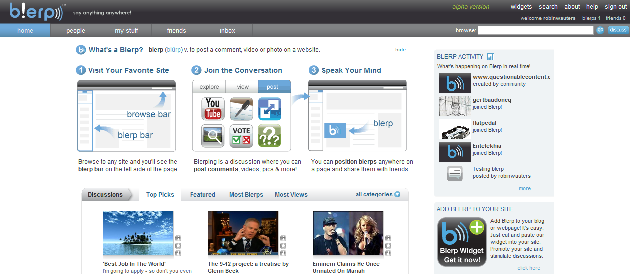

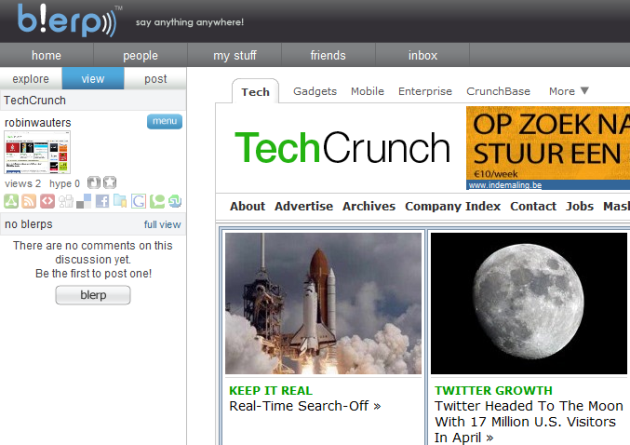
 The European Commission today announced that it has fined
The European Commission today announced that it has fined 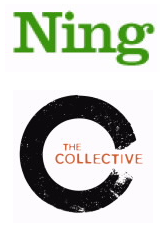 Over the last few months celebrities have become something of a currency on the social web as services vie to attract big-name stars (and gather the resulting media coverage and new users in the process). Twitter has garnered the most attention for its roster, which includes celebrities like
Over the last few months celebrities have become something of a currency on the social web as services vie to attract big-name stars (and gather the resulting media coverage and new users in the process). Twitter has garnered the most attention for its roster, which includes celebrities like 
 Ashton Kutcher got his start on the small screen. His roles in That 70s Show and development of the MTV show Punk’d (which is being
Ashton Kutcher got his start on the small screen. His roles in That 70s Show and development of the MTV show Punk’d (which is being 
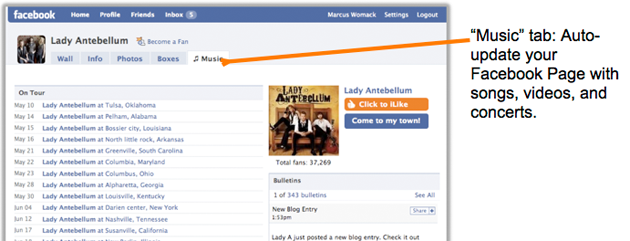
 Lots of heat is being put on Facebook over
Lots of heat is being put on Facebook over 

 Today saw the launch of two new real-time search engines, from
Today saw the launch of two new real-time search engines, from 
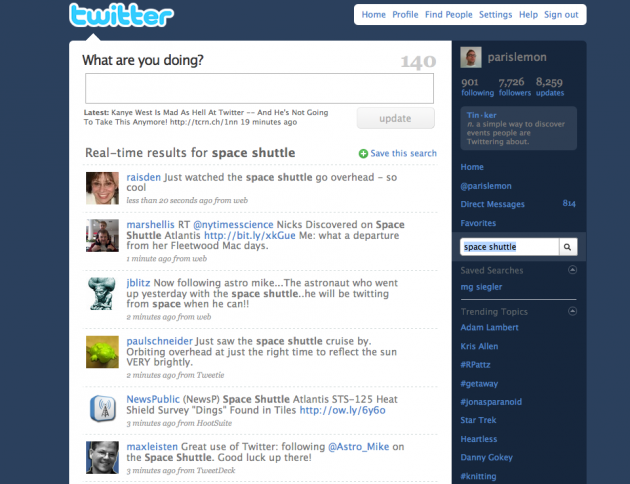
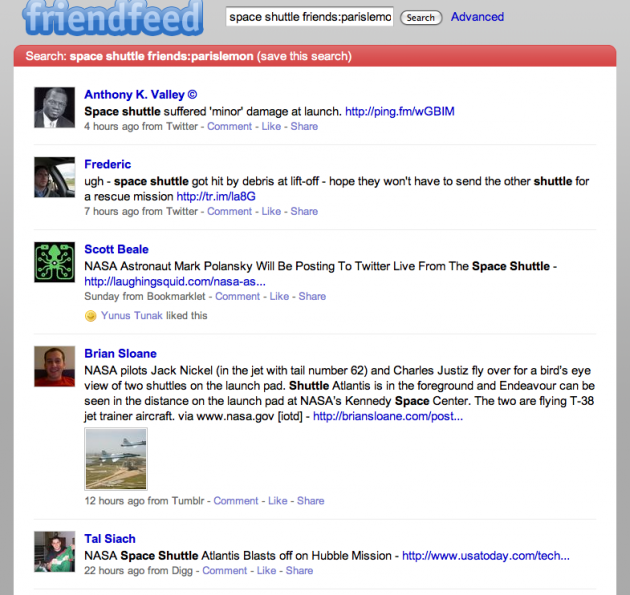
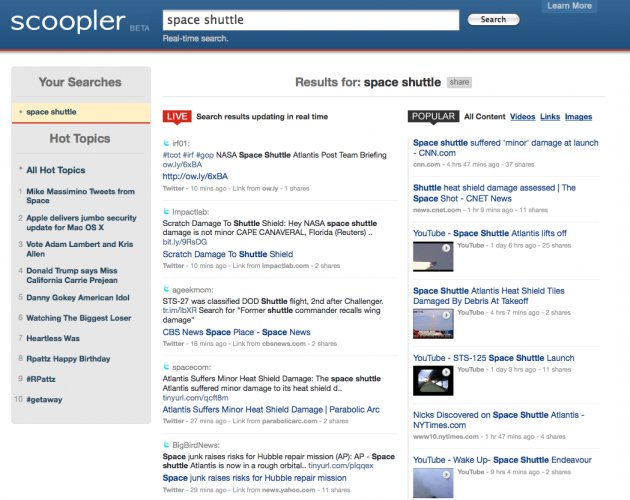
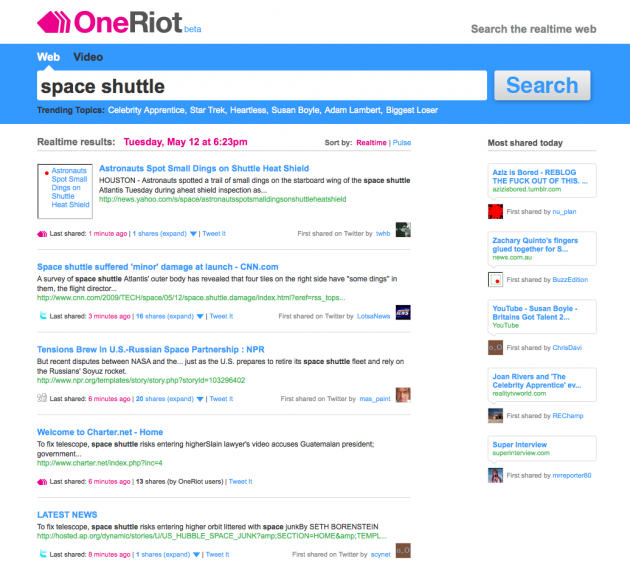
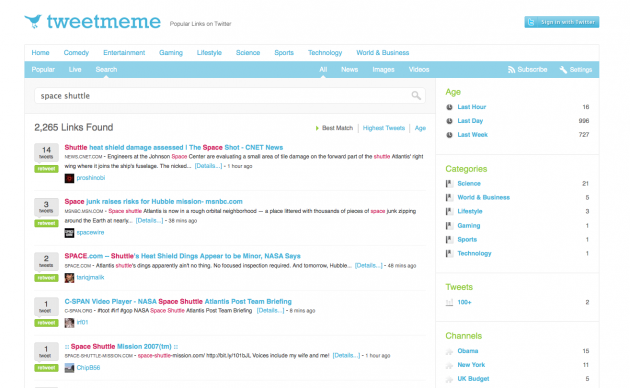
 Celebrities love Twitter, right? Just look around, Ashton Kutcher, Jimmy Fallon, P Diddy — they won’t shut up on it or about it. But not every celebrity loves it. Take hip hop artist Kanye West, for example. Apparently mad about people pretending to be him on Twitter, he went on a Peter Finch-style rant today
Celebrities love Twitter, right? Just look around, Ashton Kutcher, Jimmy Fallon, P Diddy — they won’t shut up on it or about it. But not every celebrity loves it. Take hip hop artist Kanye West, for example. Apparently mad about people pretending to be him on Twitter, he went on a Peter Finch-style rant today 
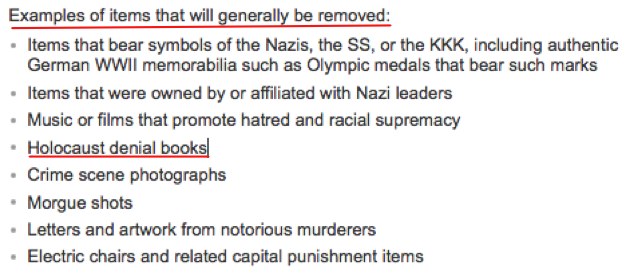

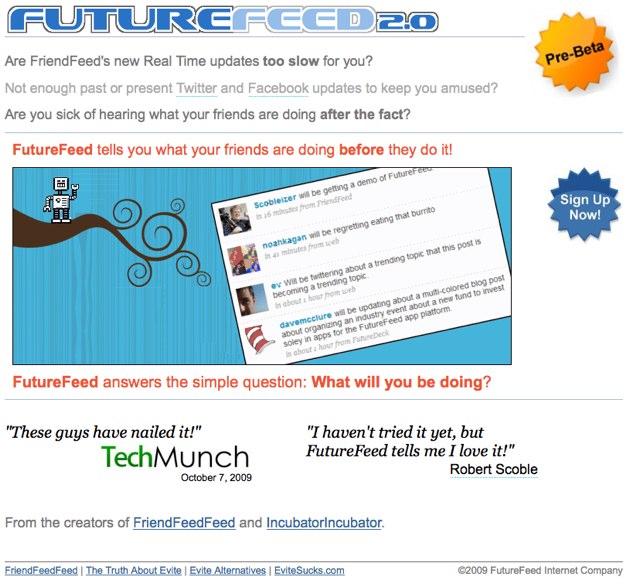
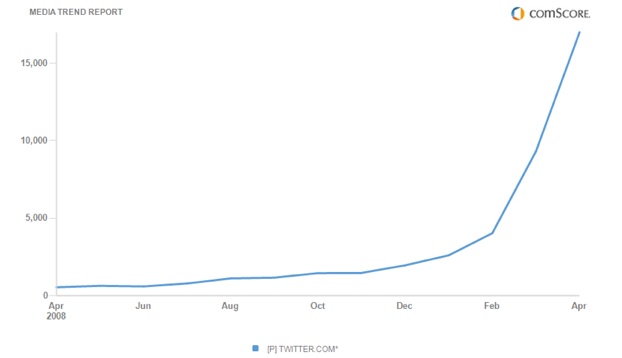
 Online survey tools are a dime a dozen, but you will not be sorry you’ve checked this one out.
Online survey tools are a dime a dozen, but you will not be sorry you’ve checked this one out. 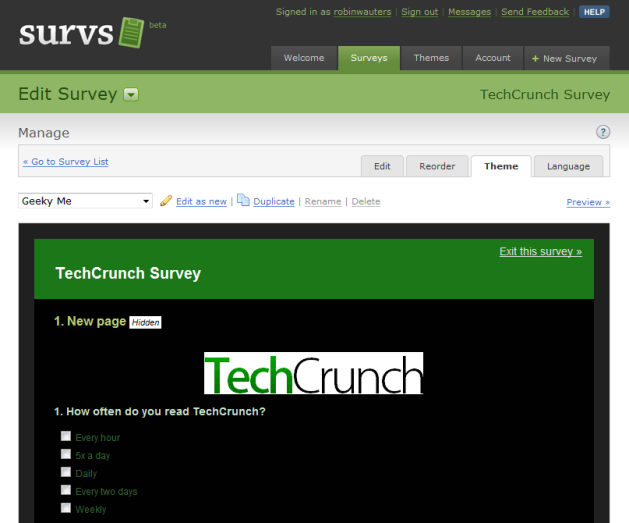
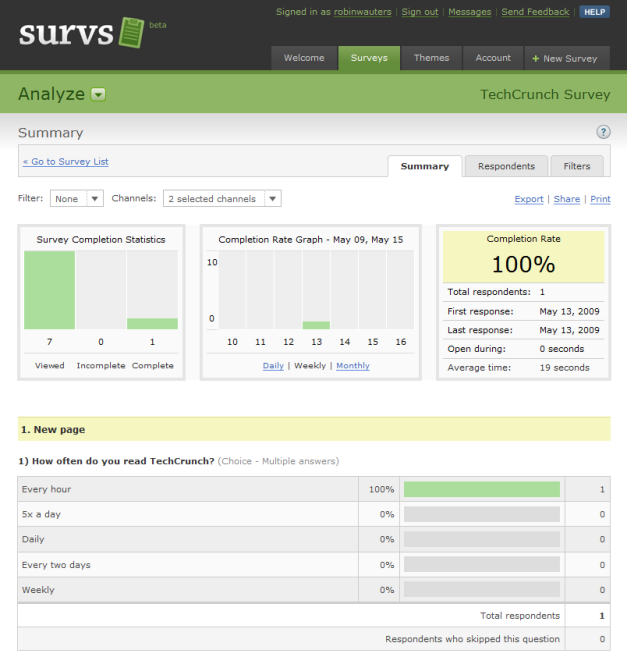

 Zune fans (all 12 of you), I have some bad news. There will be no new
Zune fans (all 12 of you), I have some bad news. There will be no new 
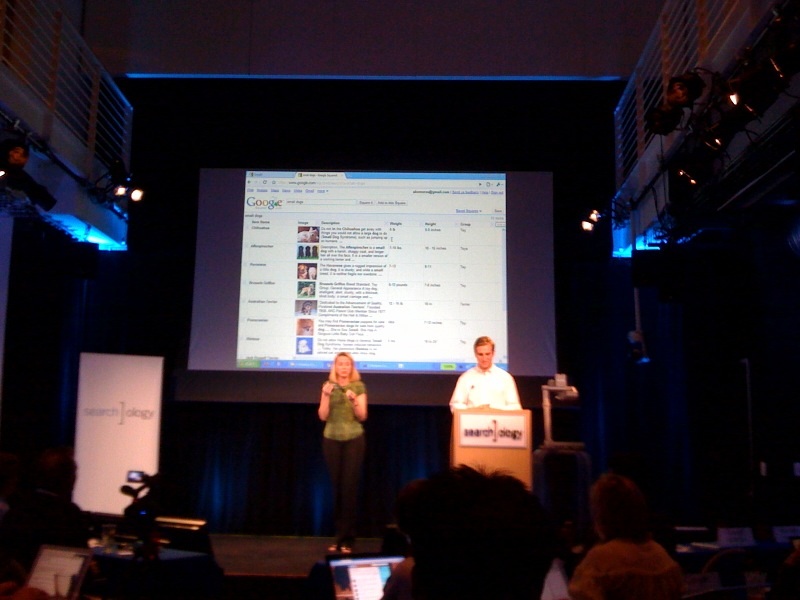
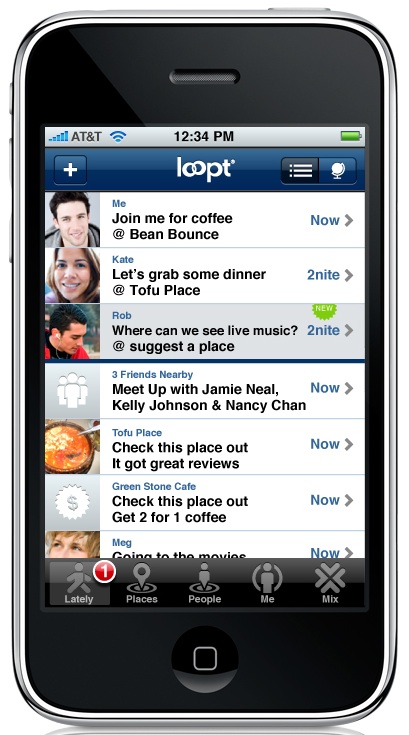

 Though you may not ever see them, there are apps in the App Store that sell for over $9.99. Mostly they’re for doctors or stupid
Though you may not ever see them, there are apps in the App Store that sell for over $9.99. Mostly they’re for doctors or stupid 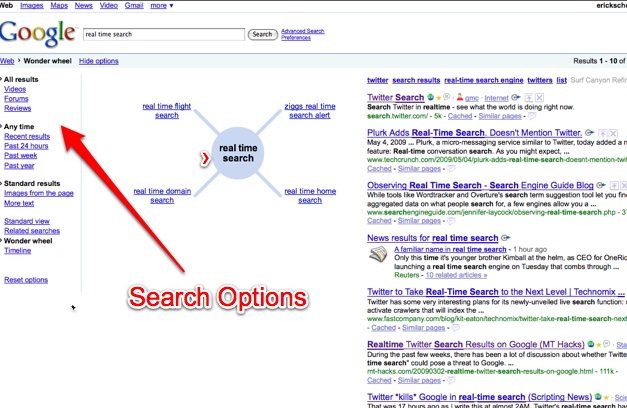
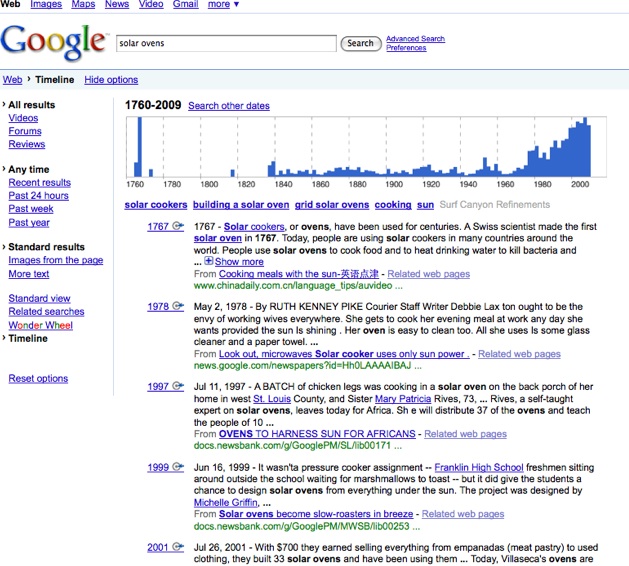
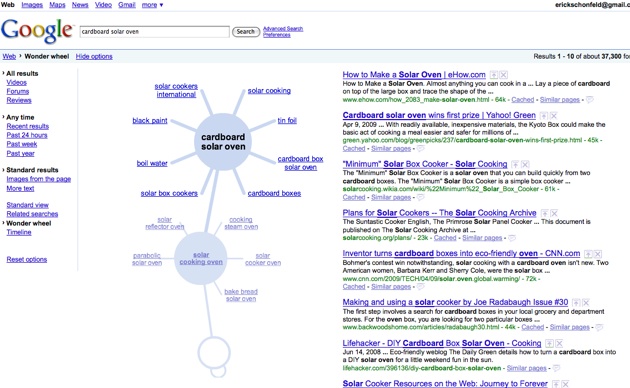
No comments:
Post a Comment